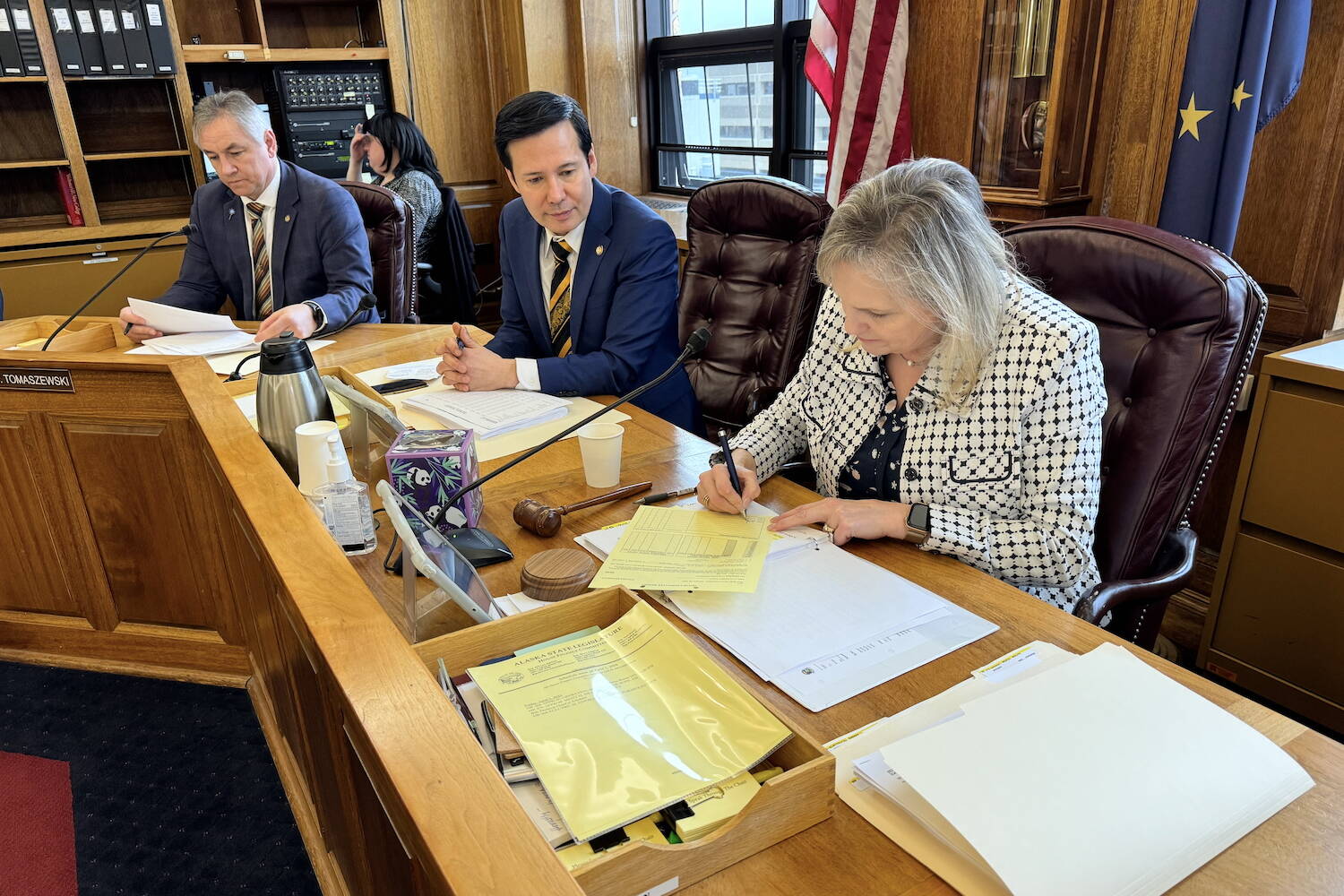Alaska’s first-draft statewide spending plan is headed toward a vote in the Alaska House of Representatives.
On Friday, members of the House Finance Committee voted without dissent to send the $12.3 billion state operating budget to a vote of the full House.
Over the past week, the budget’s size has fluctuated as lawmakers cut and added projects to a document that will pay for state services during the 12 months beginning July 1.
The budget’s biggest single piece is more than $1.7 billion for the 2024 Permanent Fund dividend, enough to pay more than $2,700 per recipient.
That amount could change in the coming weeks as the budget advances from the finance committee to the full House, then on to the Senate and the governor.
“The PFD number we have — it could change. We really don’t know,” said Rep. Mike Cronk, R-Tok.
While the operating budget currently has a surplus of almost $100 million, that figure is almost certainly a mirage because it doesn’t include the capital budget, the cost of as-yet-uncompleted contract negotiations with state employees or the cost of bills that legislators will pass this year.
For example, the budget doesn’t include the expected $40 million cost of a bill that increases internet speeds at rural schools, and it doesn’t include the $23 million cost of a senior benefits bill that is also expected to become law. Those costs are included in “fiscal notes,” documents outside the budget.
“There’s definitely the fiscal notes and things out there that probably are — certainly — going to have an impact on that surplus,” said Rep. DeLena Johnson, R-Palmer and co-chair of the House Finance Committee.
Over the past week, members of the committee considered 99 amendments to the budget and adopted dozens, some of which were reconsidered and adopted after initially being rejected.
Cronk said the changes came from legislators representing all corners of the state.
“I think it took into account every member and the different areas they live in,” he said.
The new version of the budget contains $175 million in one-time bonus funding for public schools.
Among its line items, there’s $7.5 million in bonus grants to child care centers, $4 million for a homeless shelter in Anchorage, $20 million in backstop funding for the state ferry system, $15.5 million more for the state’s disaster relief funding and $30 million for the state’s community assistance fund, which distributes no-strings-attached funding to small and large communities across the state.
“I think we did a pretty darn good job of representing the people,” Cronk said.
Cronk is a member of the House’s predominantly Republican majority caucus, but even his Democratic colleagues in the House minority didn’t disagree on Friday.
The House Finance Committee passed 19 amendments authored by members of the minority, an unusually large number.
“The due process was outstanding,” said Rep. Andy Josephson, D-Anchorage.
There were some subtractions as well. Legislators cut funding for a controversial Anchorage reading academy and eliminated the pay of the top two officials at the Alaska Gasline Development Corp., the state-owned corporation attempting to build a trans-Alaska gas pipeline.
Altogether, there were $14 million in reductions, according to figures provided by the office of Rep. Bryce Edgmon, I-Dillingham, but even after those cuts, the budget left the House Finance Committee up by $59 million when compared to the version the committee began with.
Legislators will now consider how to balance operating spending with the need to fund the state’s separate $3.5 billion capital budget, which pays for construction projects statewide.
The push and pull of funding battles will dominate the Capitol’s attention until at least mid-May.
“Really, the operating budget coming out of the House sets the stage for the rest of the session,” Johnson said.
• James Brooks is a longtime Alaska reporter, having previously worked at the Anchorage Daily News, Juneau Empire, Kodiak Mirror and Fairbanks Daily News-Miner. This article originally appeared online at alaskabeacon.com. Alaska Beacon, an affiliate of States Newsroom, is an independent, nonpartisan news organization focused on connecting Alaskans to their state government.

